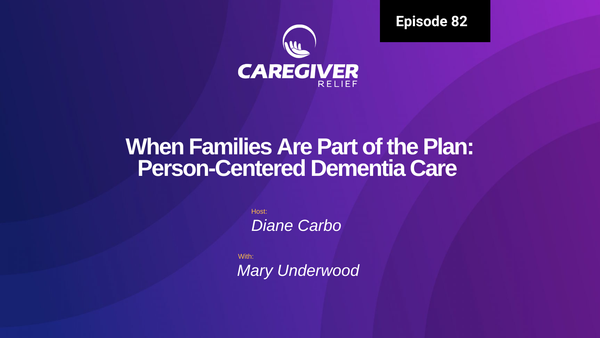Are Secretions a Symptom of End of Life?

End-of-life care is the medical and emotional support given to those near the end of their life. It is important to understand the signs and symptoms of end-of-life, so that caregivers can provide appropriate care in the last phase of life. One of those symptoms is secretions, which will be discussed in further detail below.
It is important for caregivers to be aware of the physical and emotional changes that come with the end-of-life process. We all have a limited amount of time on this earth, and it is important to understand how to make that time as comfortable as possible for those who are nearing the end of their life.
What are Secretions?
Secretions refer to the release of fluids from the body. As we age, our bodies lose the ability to regulate secretions, leading to overproduction in some areas and a decrease in others.
The two major types of secretions are mucus and sweat. Mucus is a thick, slimy fluid that helps to keep our skin and other tissues lubricated and free of bacteria. Sweat is an odorless and colorless liquid that helps the body stay cool by releasing heat. Both types of secretions can become abnormal when someone is nearing the end of life.
In elderly individuals, too much mucus can sometimes build up in the lungs causing difficulty breathing. Additionally, the lack of secretion in the glands of the eyes, nose, and mouth can cause dryness and discomfort. As well, increased levels of sweat - especially if accompanied by night sweats - can be a sign of an underlying infection.
As secretions can be a sign of underlying health issues, it’s important to recognize any changes or abnormalities so treatment can be administered if needed. An increase or decrease in secretions can also be a sign of impending death, and understanding the implications of such changes can provide comfort to both the individual and their caretaker.
Role of Secretions in End-of-Life Care
Secretions are substances released from our bodies to help us with crucial bodily processes. In end-of-life care, secretions become a sign that death may be nearing. A person’s body can produce more secretions as their life is about to end. Although difficult for both the patient and their family, it is important to recognize these secretions and the role they play so a caretaker can help mitigate the discomfort associated with them.
If someone is in the end stages of life, the production of secretions may prompt certain feelings to surface in the patient. It is common for individuals to experience fear and anxiety as they anticipate death. They may also feel a sense of sadness and depression. It is important to note that these feelings are natural and to be expected in end-of-life care.
As a caretaker, it is important to approach these issues with compassion and understanding. Do your best to provide comfort to the patient. Talk to them in a gentle manner and keep lines of communication open. This will help the patient understand that death, while sad, is an inevitable part of life. Reassure the patient that you are there for them and will do whatever you can to help them have a peaceful passing.
It is also beneficial for a caretaker to remain knowledgeable on the physical symptoms that occur during the end of life. Constant secretions can cause discomfort to the patient, and the caretaker must know how to properly manage this issue. Make sure the patient is clean and well-groomed at all times. Additionally, offer them items that will help alleviate any bodily pain or discomfort. Pain medications, supplements, and other treatments can help them make it through this difficult period.
Common Secretions in End-of-Life Care
As a person’s life nears its end, the body can experience a range of physical and emotional changes. One of the most common symptoms that people may experience at the end of their life is secretions. Secretions, such as saliva, mucus, and tears, can often be a sign that death is imminent. It is important for caretakers to understand the role that secretions play in the aging process, and to be aware of the potential complications associated with them.
There are many types of secretions that may be experienced during the end of life. Saliva is one of the most common secretions. As a person passes away, their salivary glands may become blocked, causing a buildup of saliva in the mouth. This is known as terminal dribbling. It is important to note that this is not a cause of discomfort for the individual, and it is not painful or uncomfortable for them.
Mucus is another type of secretion that may be experienced. Mucus is naturally produced by the body and helps to keep our respiratory system functioning. As a person transitions to the end of life, the body's natural production of mucus can increase, resulting in increased coughing and throat irritation.
Tears are also a common secretion during the end of life. As the body weakens, it can become difficult to regulate the tear ducts, resulting in an increased shedding of tears. This is normal, and it should not be seen as a cause of pain or discomfort for the individual.
It is important to understand the role that secretions can play in the end-of-life care of a loved one. While they may not always be comfortable, understanding their purpose and addressing them in a compassionate manner can help to ease the physical and emotional distress of those dealing with the end of life.
Complications of Secretions at End of Life
When someone is nearing the end of their life, secretions can present some serious complications. Secretions that are not managed properly can lead to uncomfortable and potentially dangerous situations for the individual and their family or caretaker. For this reason, it is important to be aware of potential complications and know how to prevent them.
One of the most common complications associated with secretions is dehydration. When the body is unable to rid itself of excess moisture and fluids, dehydration occurs. Signs of dehydration in a person nearing the end of their life include extreme thirst, dry mouth, skin dryness, confusion, sunken eyes and changes in urine output. Dehydration can be prevented by regularly monitoring the person’s fluid intake and providing enough fluids to avoid dehydration.
Another complication associated with secretions is infection. When secretions are allowed to build-up, bacteria may accumulate, resulting in an infection. Common signs of infection in end-of-life patients include increased body temperature, pain, redness and swelling around the affected area, and a foul odor. It is important to keep the area clean and ensure proper hygiene is observed to prevent infection.
The last complication is airway obstruction. If intestinal secretions are not managed properly, they can build up in the throat and restrict the individual’s ability to breathe. Signs of airway obstruction include shortness of breath, coughing, and noisy breathing. To prevent airway obstruction, it is important to keep the individual’s head elevated and make sure that their mouth is kept clear of any obstructions.
It is important to note that while these complications can be managed, they are not always preventable. Therefore, having a plan in place to address any issues that arise is essential. This plan should include options for managing the secretions, such as suctioning or replacing the individual’s bedding, and plans for obtaining medical assistance if necessary.
Examining Related Symptoms at End of Life
When someone is nearing the end of their life, there may be other signs and symptoms that indicate this. It is important to be aware of these signals, to ensure that the individual is receiving the best possible care and comfort in the time they have remaining.
There are a variety of physical, psychological, and emotional signs of end-of-life that are often overlooked but can be very telling. These include changes to the body’s overall activity level, fatigue, malnutrition, increased sensitivity to pain, decreased appetite, and incontinence.
The psychological signs of end-of-life may also be difficult to detect. These can include significant changes to sleeping patterns, lapses in memory, confusion, disorientation, or an overall feeling of detachment from the world around them.
On an emotional level, those nearing the end of their life may become increasingly withdrawn or isolated. There may be an increase in feelings of sadness, fear, or anger, and they may not respond to stimuli in the way they normally would.
It's important to keep in mind that everyone’s experience with end of life is unique. As a caregiver, it is your job to be observant and aware of any changes, both physical and emotional, that may indicate an individual is moving towards the end of their life.
Services, Resources & Support
When a loved one is facing the end of life, it’s emotional for both them and their caretakers. This is why it is important to recognize that there are a variety of services, resources, and support available to those transitioning to the end-of-life stage.
Resources and services can be broken down into two main categories: physical and emotional. Physical services provide the elderly or disabled with medical and practical help such as in-home nursing, hospice care, transportation, and home modifications. Emotional services such as counseling, support groups, and spiritual resources can provide comfort and understanding to those experiencing grief during this difficult time.
Caretakers are not exempt from needing support to help manage their own feelings of sadness and guilt when helping a loved one through end of life. Resources such as counseling and support groups can help them come to terms with their role and offer additional guidance. Furthermore, legal services like wills and probate can help a caretaker make sure that the final wishes of their loved one are held in accordance with their wishes.
No matter what role you play during a loved one’s end-of-life care, it's important to remember that help is available. Whether it's medical or spiritual advice, reaching out to available resources can make all the difference in providing comfort to the person in their last days.
Overview and Summary
This guide explored the role secretions play in end-of-life care and considerations for those who are experiencing them. We looked at how secretions can be a sign that death may be close, and the various types of secretions one may experience. Additionally, we discussed the potential complications that can occur with secretions and how to manage these risks. Finally, we provided information on services, resources, and support available for both caretakers and those facing their end of life.
Understanding end-of-life care is incredibly important. It helps us recognize the signs that may suggest death is near, and it also helps us understand how to best help and support someone going through this difficult period of life. With the information discussed in this guide, you now have an understanding of what to expect when it comes to secretions and end-of-life care.
Questions & Answers
End of life care can be a difficult subject to discuss, but it is important to be aware of the signs and symptoms associated with it. We have compiled some of the most commonly asked questions about secretions as they relate to end of life care.
- What are secretions?
Secretions are liquid or mucous substances produced by the body’s cells. These secretions can be watery, salty, or mucous in nature. They can originate from several areas of the body including the nose, eyes, and digestive tract.
With the help of these questions and answers, individuals can be better prepared to take on the responsibility of caring for an aging loved one. It is important to remember to always seek medical advice when facing the end of life.
Additional Resources
Facing the end of life can be a difficult, lonely experience for both the elderly individual and their loved ones. There are many resources and organizations that exist to support those who are struggling during this time.
Websites like Hospice Foundation of America provide detailed information about end-of-life care, including facts about physical and emotional changes that may occur.
Additionally, books such as Being Mortal: Medicine and What Matters in the End by Atul Gawande offer insight into making the most of life’s final stages.
Organizations such as Compassion & Support offer support to those caring for someone with a terminal illness, as well as those facing the end of their own life.
By understanding all of the available resources, you can make sure that you or your loved one is appropriately supported and cared for during this difficult time.
Conclusion
The end of life is a unique experience, and those who are facing it often require special care and support. In this guide, we discussed what secretions are and the role they play in the progression of end-of-life care. We also detailed common secretions experienced in this stage of life, along with any possible complications that can arise. In addition to secretions, we explored other related symptoms to look out for that may signify the end of life. To provide caretakers and patients with more support, we highlighted resources and services available to those facing end-of-life care.
It is our hope that this guide provided you with a comprehensive look at how secretions can function as a symptom of end-of-life and equip you with adequate knowledge and resources to best care for your loved one. Remember to take a moment and cherish the time you have, knowing that the moments spent together are valuable and precious.





